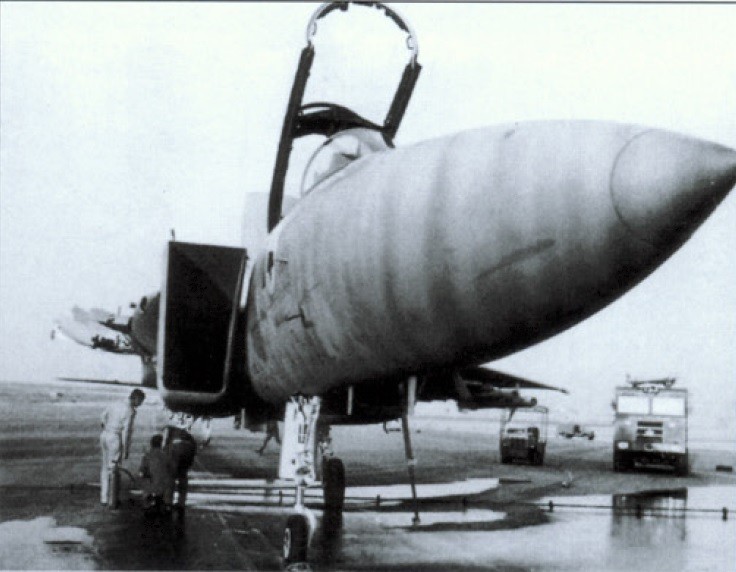The famous episode when an Israeli Air Force F-15 was able to land with one wing.
The F-15 is not only a famous MiG Killer.
The legendary Eagle is also a very robust aircraft, that can survive some serious damages. As shown by a very well-known incident which occurred in 1983, in the skies over Nahal Tzin in the Negev desert, in Israel, during a mock aerial combat between two Israeli Air Force F-15Ds and four A-4Ns, when one of the Eagles, the F-15D #957 nicknamed ‘Markia Shchakim’, 5 killmarks, used for conversion of a new pilot named Zivi Nedivi, collided mid-air with one of the Skyhawks.
As explained in No Wing F-15, an interesting piece written by John Easley, Zivi didn’t immediately realize what had happened: he felt a big jolt and saw a huge fireball caused by the A-4 explosion, followed by radio communications according to those the Skyhawk pilot had successfully ejected.
He realized that the F-15 was badly damaged when the aircraft fell in a very tight spiral after a huge fuel leak from its right wing.
After regaining the control of the aircraft Nedivi was ordered to eject but decided not to bail out since he was confident he could land the plane at the nearest airfield, 10 miles away, even thought the F-15 was flying on vapors: he began to reduce speed but the missing right wing (that the Israeli pilot was still unaware of) caused a new spin.
Then just before ejecting, Nedivi decided to light the afterburners, gaining speed and managing to somehow control the F-15 once again.
Once he reached the air base, he lowered the tail hook, touched down at about 260 knots, which was twice the speed recommended for a standard landing, and managed to stop the plane about 10 meters before it engaged the Safeland Airfield Arrester Barrier.
As told by Easley, it was only after he turned back to shake his instructor’s hand, that Zivi discovered that he had flown and landed without a wing!
After the mishap, McDonnell Douglas, inquired by the Israeli Air Force, affirmed that it was impossible for an F-15 to with one wing only, but once they received the photo of the Eagle flying without one wing, they said that, pilot skills aside, damaged aircraft had been able to return to the base thanks to the lift generated by both its engine intakes and its fuselage.
Nevertheless proving once again its tremendous strength, after two months the Eagle received a new wing and returned to fly, as you can see in the picture below.
Image credit: Wiki
In the following video you can hear Zivi Nedivi himself explaining how he was able to land without its right wing.
Top Image credit: Israeli Defense Force

















